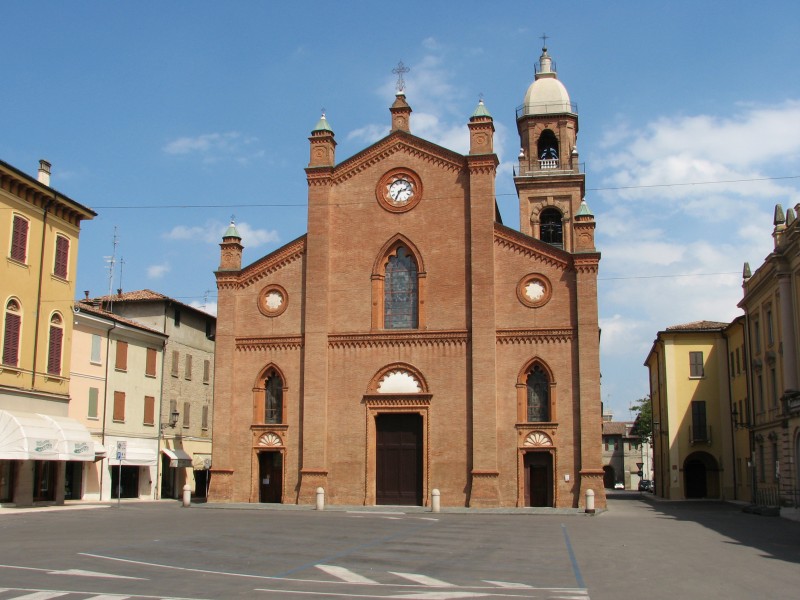Duomo

La chiesa di Santa Maria Maggiore venne costruita in stile tardo gotico a partire dal 1440 e completata nel 1470 dalla famiglia Pico, per motivi strategici: grazie alla sua realizzazione, i signori di Mirandola poterono istituire all’interno della cittadella la Parrocchia della Mirandola, quando a quel tempo, la gestione delle anime dipendeva dalla Pieve di Santa Maria della Neve di Quarantoli. Oggi l’edificio presenta una facciata ricostruita nel XIX secolo in forme neogotiche e al suo interno ospita pregevoli dipinti, affreschi e monumenti funebri.
Nel corso dei secoli ha visto diverse modifiche, alterazioni e restauri e a metà dell'800 fu ricostruita la facciata con forme neoquattrocentesche e rinascimentali. Le vetrate policrome furono eseguite nella prima metà del 900 in stile neorinascimentale. Entrando dalla porta laterale destra, notiamo il grande mausoleo in marmo di Carrara dedicato al mirandolese Antonio Bernardi che fu vescovo di Caserta nel XVI secolo. Nella parete di fondo della campata di destra vi è collocato il dipindo di San Possidonio eseguito nel '700 dal mirandolese Giuseppe Andreoli. In fondo alla campata di sinistra vi è collocato l'affresco di Pietro Annigoni del 1983, che raffigura Gesù Crocifisso. Il campanile è alto 48 metri e la base è del tardo quattrocento. Papa Bergoglio, nell'aprile del 2017, è giunto a Mirandola, per depositare sull'altare del Duomo un mazzo di fiori delle vittime del sisma.
The Duomo
The church of Santa Maria Maggiore was built in late Gothic style starting from 1440 and completed in 1470 by the Pico family for strategic reasons. Thanks to its construction, the Lords of Mirandola were able to establish the Parish of Mirandola within the citadel, at a time when the management of souls depended on the Pieve of Santa Maria della Neve in Quarantoli. Today, the building features a facade reconstructed in the 19th century in neo-Gothic style and houses valuable paintings, frescoes, and funerary monuments.
Over the centuries it has seen several changes, alterations and restorations and in the mid-1800s the façade was rebuilt with neo-fifteenth-century and Renaissance forms. The polychrome stained glass windows were made in the first half of the 900 in neo-Renaissance style. Entering from the right side door, we notice the large Carrara marble mausoleum dedicated to Antonio Bernardi from Mirandola, who was bishop of Caserta in the sixteenth century. On the back wall of the right bay there is the painting of San Possidonio executed in the 1700s by Giuseppe Andreoli from Mirandola. At the end of the left bay there is the fresco by Pietro Annigoni from 1983, which depicts Jesus Crucified. The bell tower is 48 meters high and the base is from the late fifteenth century. Pope Bergoglio, in April 2017, arrived in Mirandola, to deposit a bouquet of flowers from the victims of the earthquake on the altar of the Cathedral.
Testi a cura di La Nostra Mirandola
